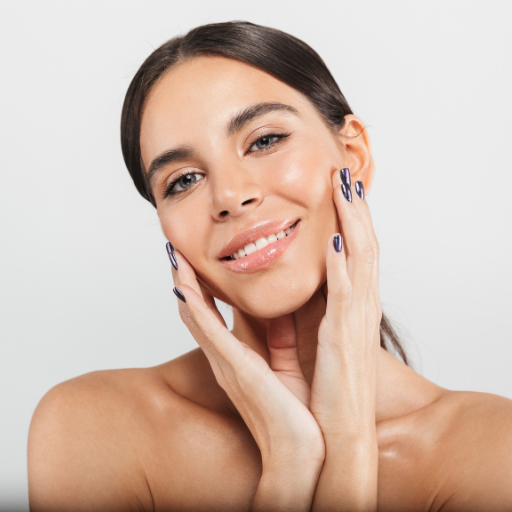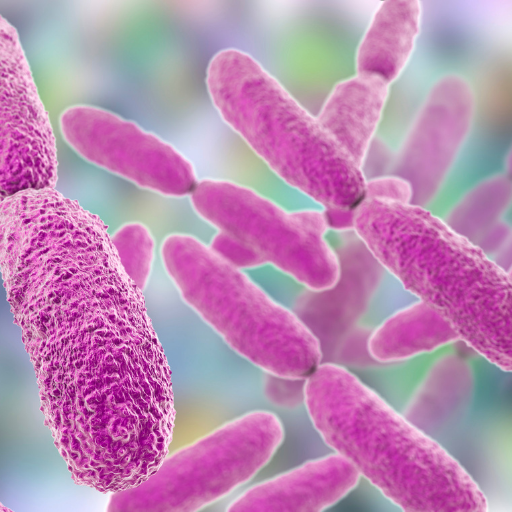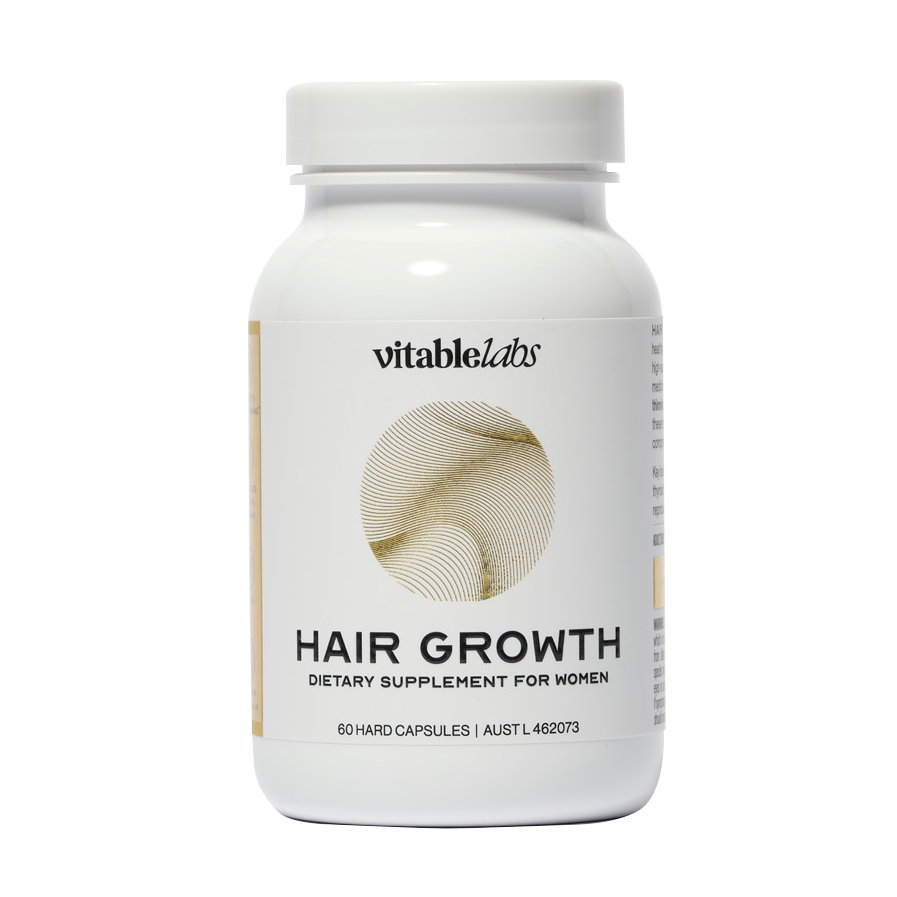Wellness Blog
The content on this blog is for general informational purposes only and is not a substitute for professional medical advice, diagnosis, or treatment. Always consult your healthcare provider before making changes to your health routine or taking new supplements.
The benefits of cranberry for healthy skin
Skin: The largest organ in our bodyThe skin is our body's largest organ. It covers and protects our muscles, bones, the network of nerves and blood vessels and everything else in our body (1). While it is found all over our body, it varies in thickness, colour and texture. For example, our eyelids have the thinnest skin while the soles of our feet have the thickest skin in our body (2). Our skin is essential to our everyday life in many ways. Aside from protecting our body from injury and harmful external substances and microorganisms, it also regulates our temperature, lets us feel sensations of touch, warmth and cold (1). Our hair and nails are also considered skin, both are made up of skin cells and are a part of the many functions our skin performs (3).Getting to know your skin can be a big help when it comes to knowing how to take care of it. There seems to be a lot to work on, but don't get overwhelmed! There are simple ways to approach skin care. Let's take a look!Our skin: Up close and personalOur skin is a good indicator of our health. Oftentimes, when someone is sick, this can be evident in their skin (3). This vast organ is made up of three main parts: Epidermis, which is the outer layer of our skin. It is a network of cells that serves as the body's first resistance against injury, bacteria, viruses and infections. Our hair and nails grow from this layer of our skin, as an added barrier of protection for our body (4). Dermis, which is a dense network of specialised proteins under the epidermis. It is made up of fibres surrounded by proteins that contain the blood, lymphatic vessels, our nerves and sweat glands (4). Subcutis, which is a specialised layer under the dermis. It contains a network of fibres and fat cells that protects the body from outside trauma and insulates the body from cold. The body's energy is stored in this layer (4). Aside from these main layers of the skin, let's not forget our hair and nails. While we often consider them as aesthetic parts of our body, that's not all they are for.Our hair grows from new cells that multiply on our epidermis. It serves many important functions that keep our body protected, such as: keeping us warm by preserving the heat in our body, shields sensitive areas such as the nose, eyes and ears from dust and other small particles, and moderating the amount of light that goes through our eyes (1). Meanwhile, our nails grow from a protein called keratin, which also makes up our skin and hair. They support and protect the tips of our fingers and toes, which enables us to perform simple motor tasks such as picking up objects (5). Now that we are a little bit more familiar with how our skin works, let's move on to how you can take care of it yourself.Skin care and youIt's important to keep our skin healthy, so we can go about our everyday lives well-protected and without any discomfort. It doesn't have to be complicated and filled with expensive skin care products.Healthy skin can also help delay natural ageing and prevent skin diseases (6). You can start caring for your skin with these easy tips: Be gentle to your skin. Keep baths short and use warm water. Avoid strong soaps and cleansers, moisturise regularly and shave carefully (7). Protect yourself from the sun. Wear sunscreen and protective clothing when appropriate as too much sun exposure can lead to many skin problems (7). Avoid excessive smoking and drinking. Smoking and drinking can cause stress that depletes the skin of oxygen and nutrients and can damage collagen production (7). Eat a healthy diet. Keep your diet filled with fruits, vegetables, whole grains and lean proteins. Of course, regularly drink plenty of water to stay hydrated as it keeps your skin healthy (7). A healthy diet and lifestyle can help you look and feel great. You can choose to boost your skin care regimen with supplements for healthy skin.Support skin health with cranberryA healthy diet includes plenty of fruits in a variety of forms. These fruits can include apples, bananas, grapes and berries (8). Berries, in particular, are a good source of potassium or fibre. But recent research suggests that berry fruits can be a rich source of phytochemicals with antioxidant effects that can help boost our body's defenses (9).Cranberries are a particular kind of berry that grows from low and woody vines, and were primarily used by Native Americans for various foods and medicine to treat wounds (10). As the popularity of cranberries rises as a superfood that can address multiple health problems, can we truly rely on the different cranberry benefits for skin?Cranberry benefits for skinCranberries are rarely consumed fresh and can primarily be ingested as cranberry juice. Cranberry supplements can also harness its benefits for the skin and introduce the following benefits: Cranberries are rich in vitamin C, which is essential in the production of collagen (11). Cranberry benefits for skin include helping maintain and support collagen formation, which can significantly improve your skin's hydration, elasticity, and texture (12). Cranberry intake can also help support hair health via collagen production, which safely and effectively promotes hair growth (13). Cranberry benefits for skin also include maintaining and supporting our hair and nails' growth and thickness. Cranberry supplements provide colloidal silica that plays an important role in repairing connective tissues in our hair and nails (14). If you are looking for supplements that can give a healthy boost to your skin care regimen, consider cranberry supplements. You can include cranberry in your supplement subscription from Vitable Australia. This vitamin delivery service lets you choose custom vitamins that are delivered straight to your doorstep! This vitamin delivery may just be what your skin needs to get that healthy glow. Build your very first supplement subscription and get a Vitable daily vitamin pack now!Find out more about other supplements that can support skin health:Zinc | Iron | Astaxanthin | B complex | Calcium Plus | Vitamin B12 | Ginkgo Brahmi *Always read the label. Follow the directions for use. If symptoms persist, talk to your health professional. Vitamin and/or mineral supplements should not replace a balanced diet.References: Rady Children's Hospital San Diego Content Team. “Skin, Hair and Nails”. Rady Children's Hospital San Diego: Rchsd.Org. Published on https://www.rchsd.org/health-articles/skin-hair-and-nails/. Accessed December 2, 2021. Stanford Children's Health Content Team. “Anatomy of the Skin”. Stanford Children's Health: Stanfordchildrens.Org. Published on https://www.stanfordchildrens.org/en/topic/default?id=anatomy-of-the-skin-85-P01336. Accessed December 2, 2021. Better Health Channel Content Team. “Skin explained”. Better Health Channel: Betterhealth.Vic.Gov.Au. Published on https://www.betterhealth.vic.gov.au/health/conditionsandtreatments/skin#hair-and-nails-and-the-skin. Accessed December 2, 2021. Choi, J. & Minochi, R. “Skin structure and function”. The Australian College of Dermatologists: Dermcoll.Edu.Au. Published on https://www.dermcoll.edu.au/atoz/skin-structure-function/. Accessed December 2, 2021. Better Health Channel Content Team. “Nails - finger and toenail problems”. Better Health Channel: Betterhealth.Vic.Gov.Au. Published on https://www.betterhealth.vic.gov.au/health/conditionsandtreatments/nails-fingernail-and-toenail-problems#structure-of-the-nail. Accessed December 2, 2021. Mayo Clinic Content Team. “Skin care: 5 tips for healthy skin”. Mayo Clinic: Mayoclinic.Org. Published October 15, 2019 on https://www.mayoclinic.org/healthy-lifestyle/adult-health/in-depth/skin-care/art-20048237. Accessed December 2, 2021. The Royal Women's Hospital Content Team. “Caring for your skin”. The Royal Women's Hospital: Thewomens.Org.Au. Published on https://www.thewomens.org.au/health-information/staying-well/tips-for-staying-well/caring-for-your-skin. Accessed December 2, 2021. Blumberg, J. B., Camesano, T. A., Cassidy, A., Kris-Etherton, P., Howell, A., Manach, C., Ostertag, L. M., Sies, H., Skulas-Ray, A., & Vita, J. A. “Cranberries and Their Bioactive Constituents in Human Health”. National Center for Biotechnology Information: Ncbi.Nlm.Nih.Gov. Published November 6, 2013 on https://www.ncbi.nlm.nih.gov/pmc/articles/PMC3823508/. Accessed December 2, 2021. Paredes-López, O., Cervantes-Ceja, M. L., Vigna-Pérez, M., & Hernández-Pérez, T. “Berries: Improving Human Health and Healthy Aging, and Promoting Quality Life—A Review”. National Center for Biotechnology Information: Ncbi.Nlm.Nih.Gov. Published November 6, 2013 on https://www.ncbi.nlm.nih.gov/pmc/articles/PMC3823508/. Accessed December 2, 2021. Neto, C. and Vinson, J. “Herbal Medicine: Biomolecular and Clinical Aspects”. National Center for Biotechnology Information: Ncbi.Nlm.Nih.Gov. Published 2011 on https://www.ncbi.nlm.nih.gov/books/NBK92762/. Accessed December 2, 2021. Redmond, E. J., Murphy, C. F., Leonard, J., Faulds, K., Abdelfadil, S., Crowley, V. E., Lynch, T. H., & Manecksha, R. P. “The influence of dietary supplementation with cranberry tablets on the urinary risk factors for nephrolithiasis.” National Center for Biotechnology Information: Ncbi.Nlm.Nih.Gov. Published July 23, 2018 on https://pubmed.ncbi.nlm.nih.gov/30039387/. Accessed December 2, 2021. Bolke, L., Schlippe, G., Gerß, J., & Voss, W. “A Collagen Supplement Improves Skin Hydration, Elasticity, Roughness, and Density: Results of a Randomized, Placebo-Controlled, Blind Study”. National Center for Biotechnology Information: Ncbi.Nlm.Nih.Gov. Published on October 17, 2019 on https://www.ncbi.nlm.nih.gov/pmc/articles/PMC6835901/. Accessed December 2 2021. Ablon, G. “A 3-Month, Randomized, Double-Blind, Placebo-Controlled Study Evaluating the Ability of an Extra-Strength Marine Protein Supplement to Promote Hair Growth and Decrease Shedding in Women with Self-Perceived Thinning Hair”. National Center for Biotechnology Information: Ncbi.Nlm.Nih.Gov. Published on November 5, 2012 on https://www.ncbi.nlm.nih.gov/pmc/articles/PMC3509882/. Accessed December 2, 2021. Barel, A., Calomme, M., Timchenko, A., Paepe, K. D., Demeester, N., Rogiers, V., Clarys, P., & Vanden Berghe, D. “Effect of oral intake of choline-stabilized orthosilicic acid on skin, nails and hair in women with photodamaged skin”. National Center for Biotechnology Information: Pubmed.Ncbi.Nlm.Nih.Gov. Published on October 26, 2005 on https://pubmed.ncbi.nlm.nih.gov/16205932/. Accessed December 2, 2021.
Learn moreHow cranberries can help you through your UTI
If you feel a burning sensation while urinating, you may be experiencing a telltale symptom of a urinary tract infection, simply known as a UTI. 40% of women are likely to have UTI at some point in their lives. 3 in 25 men may contract UTI. It is particularly common in women, babies and older adults (9). UTI is most frequently caused by bacteria that enters your body via the urethra, consequently infecting the urinary tract and making otherwise painless urination uncomfortable (1).Aside from a burning sensation, other UTI symptoms can include increased attempts to urinate but being unable to pass only a small amount of urine, cloudy or discolored urine, and unusually strong-smelling urine (2). However, there are other health conditions that share these symptoms with UTI, and the only way to know the true cause behind them is by seeing your doctor or a clinical naturopath.Getting a UTI is more common than most people realise. It is a condition that affects children, adolescents, and adults alike, with women being more prone to UTIs than men. The condition is usually easily treatable and is seldom cause for worry. In some cases, it may be possible to recover from this temporary health setback by doing a UTI home remedy, however, the best UTI treatment still incorporates the professional advice of a doctor.Despite not being talked about often, urinary tract health is very much part of our overall physical well-being. After all, the urinary system is solely responsible for ridding the body of liquid waste products and if it does not function efficiently, we could develop other complications (2).This article contains information on the most effective UTI treatments to manage an ongoing infection as well as other health practises to help prevent recurrences and significantly lower your susceptibility to UTIs.All about the urinary systemThe urinary system includes the kidneys, which filter and remove toxins from the blood then turns these waste products into urine. Afterwards, the ureters facilitate the movement of urine to the bladder. The bladder then stores urine before it exits the body through the urethra when you visit the toilet (2).What causes UTIAs mentioned earlier, bacteria or microbes that enter the body and infect the urinary tract are the biggest culprits of UTI. While the urinary tract is capable of keeping out bacteria and other microscopic elements that harm the body, if the your immunity is compromised, your risk of UTI increases (3).While you may suspect that UTI-causing bacteria comes from wearing unclean undergarments or your genitals coming into contact with other unhygienic surfaces or objects, research states that it's bacteria that naturally lives on skin surrounding the genital area, the rectum, or in the bowels that are the true cause. Furthermore, most UTIs can be attributed to Escherichia coli (E.Coli) bacteria (3). E coli is commonly found in the large intestines of humans. Its entry into the urethra from the anus especially for women, can cause UTI. Wiping front to back is recommended to prevent UTI (10). Proanthocyanidin in berries like cranberries, blueberries and raspberries as well as yoghurt, pickles and sauerkraut contain good bacteria. High fibre foods like bananas, beans, lentils and nuts help remove harmful bacteria from our bodies. Omega-3 fatty acids in salmon reduce inflammation in the body to fight E coli (11).A UTI can affect the urethra, ureters, bladder, or kidneys, but UTI symptoms can manifest the same way regardless of which of these urinary system organs are affected. It is important to book an appointment with your doctor or clinical naturopath if you suspect you have a UTI, as this infection can spread to other organs, complicating UTI treatment (3).UTI treatment and preventionA UTI treatment is best carried out with the professional advice of a doctor or clinical naturopath. It is never advised to self-diagnose and carry out a UTI treatment or a UTI home remedy on your own without proper support.When you undergo a full urinary analysis at the doctor's, you will likely come home with a prescription and be advised on practical health and hygiene tips to prevent reinfection (2).Evidence-backed tips for UTI treatment and prevention often center around increasing water intake to encourage your body to flush out UTI-causing bacteria, avoiding commercially produced intimate products that may alter the balance of good and bad bacteria on the skin, and making sure that you clean your genital area after toilet visits to get rid of any urine or fecal residue. For women in particular, they are advised to wipe from front to back so that they avoid the spread of bacteria originating from the anus to the urethra (3).It's also good to know that adjusting your diet by eating more nutritious food can contribute to successful UTI treatment and prevention. Specifically, eating and drinking more cranberry, or consuming the fruit in its supplement form, is something worth exploring (4).Cranberry as a recommended UTI treatment and UTI home remedyCranberries can help support urinary tract health and reduce the occurrence of medically diagnosed cystitis (5, 6). The super fruit can be consumed as is, in the form of an unsweetened or unprocessed beverage, or as a supplement. Cranberry supplements are ideal for individuals who may not have access to fresh fruit. For a UTI to occur, bacteria must stick to and raid the lining of the bladder. Cranberries contain A-type proanthocyanidins, which arrest the bacteria's power to adhere to the bladder walls. This helps reduce the chances of infection (12).Vitable Australia is a trusted source for Cranberry supplements and other vitamin and mineral supplements for maintaining overall health. You can get a hold of this UTI support by subscribing to the monthly supplement package. Vitable Australia lets you customise your own vitamin pack to ensure that you only get the supplements you need. Support your urinary tract health with these personalised vitamin packs brought straight to your doorstep through Vitable's convenient vitamin delivery service.*Always read the label. Follow the directions for use. If symptoms persist, talk to your health professional. Vitamin and/or mineral supplements should not replace a balanced diet.References: Center for Disease Control Content Team. “Urinary Tract Infection”. Center for Disease Control: Cdc.Gov. Published August 18, 2021 on https://www.cdc.gov/antibiotic-use/uti.html. Accessed January 24, 2022 Cleveland Clinic Content Team. “Urinary Tract Infections”. Cleveland Clinic: My.Clevelandclinic.Org. Published May 7, 2020 on https://my.clevelandclinic.org/health/diseases/9135-urinary-tract-infections. Accessed January 24, 2022. Mayo Clinic Content Team. “Urinary tract infection (UTI)”. Mayo Clinic: Mayoclinic.Org. Published April 23, 2021 on https://www.mayoclinic.org/diseases-conditions/urinary-tract-infection/symptoms-causes/syc-20353447. Accessed January 24, 2022. Better Health Content Team. “Urinary tract infections (UTI)”. Better Health: Betterhealth.Vic.Gov.Au. Published on https://www.betterhealth.vic.gov.au/health/conditionsandtreatments/urinary-tract-infections-uti. Accessed January 24, 2022. Guay, D. R. “Cranberry and Urinary Tract Infections”. National Center for Biotechnology Information: Pubmed.Ncbi.Nlm.Nih.Gov. Published 2009 on https://pubmed.ncbi.nlm.nih.gov/19441868/. Accessed January 24, 2022. Hisano, M., Bruschini, H., Nicodemo, A., & Srougi, M. “Cranberries and lower urinary tract infection prevention”. National Center for Biotechnology Information: Ncbi.Nlm.Nih.Gov. Published June 2012 on https://www.ncbi.nlm.nih.gov/pmc/articles/PMC3370320/. Accessed January 24, 2022. https://www.ucsfhealth.org/conditions/urinary-tract-infections. 2022 https://www.ucsfhealth.org/conditions/urinary-tract-infections#:~:text=The%20most%20common%20bacteria%20found,90%20percent%20of%20the%20time. 2022 https://www.dispatchhealth.com/blog/what-to-eat-and-avoid-during-uti/#:~:text=Try%20incorporating%20foods%20like%20plain,harmful%20bacteria%20from%20your%20body. Feb 2021 https://www.medicalnewstoday.com/articles/306498#Cranberry-capsules-reduce-the-prevalence-of-UTI. Feb 2016.
Learn more





